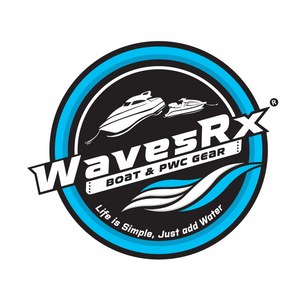Fixing Common Jet Ski Loading and Transport Problems
Transporting a jet ski might seem straightforward, but it can turn into a headache if a few simple steps get skipped. From trailer setup to strapping it down, each part of the process matters. When things go wrong like a misaligned ski, loose straps, or an off-balance trailer, it can lead to damage or delays, and sometimes bigger problems on the road. That’s why taking the time to prep properly and avoid simple mistakes can make a smooth ride to the water.
Common problems include loading errors, uneven fitment on the trailer, and using low-quality or mismatched tie-downs. And once you hit the road, sudden bumps or sharp turns start to cause problems if things aren’t secured right. So whether you're heading out for a weekend ride or towing your ski across longer distances, having a plan helps protect your gear and your peace of mind. It doesn’t take much to load up correctly it just takes knowing what to look for, what to avoid, and how to secure your setup from the start.
Preparing Your Trailer For Jet Ski Loading
No matter how experienced you are, trailer prep always comes first. If the trailer isn’t ready, you’re already fighting an uphill battle. A good routine starts with a basic inspection to catch wear and tear before rolling out. Even a slightly bent bunk or loose roller can throw off the way your jet ski loads and sits during transport.
Use a checklist like this before every trip:
- Check tires for air pressure, dry rot, or cracks
- Make sure lights and wiring are fully functional
- Inspect winch straps for signs of fraying
- Tighten bolts around the bunks, rails, and axle
- Test the trailer tongue lock and safety chains
- Grease the wheel bearings if needed
After that, turn your attention to how your jet ski actually fits on the trailer. The bunks or rollers should line up with the jet ski’s hull. If it tilts or leans when loaded, you may need to adjust the trailer's spacing or angle. Proper weight distribution matters too. If too much weight sits on the tongue or shifts to the rear, it affects handling and braking when driving.
Finally, make sure every part that holds your ski in place is secure. Loose winches, missing pins, or sloppy tie-down points are what lead to mid-drive movement or worse. Nothing should rattle or shift when lightly pushed. A tight, stable setup is safer and saves you from having to pull over and readjust constantly.
Common Loading Mistakes And How To Avoid Them
Loading seems easy line it up and pull it in but small missteps here tend to snowball. One of the most common mistakes is not centering the jet ski. If it comes up at an angle, the ski can rub against the trailer rails or even slide during transport. A fast-loading approach without checking alignment often leads to that issue.
It’s also easy to mess up weight balance without noticing. Too much weight forward puts pressure on your hitch and affects steering. Too much to the rear lightens the tongue weight and makes it harder to control your tow vehicle. Either way can cause sway, especially at highway speeds.
Some tips that help avoid common loading mistakes:
- Load slowly and check from both sides to confirm it's centered
- If loading in water, keep the trailer at the right depth too shallow or too deep creates tilt
- Use guide poles or rubber bumpers to help align the ski if solo-loading
- Secure the winch hook before climbing off the trailer to avoid rollback
- Don’t rely on eye judgment alone walk a circle around to check alignment after loading
Taking time during the loading process means fewer problems later. You don’t want to hear a thud from the trailer once you're cruising down the road. So before you shift gears and hit the truck’s ignition, double-check where your jet ski sits and how it’s supported. One extra walk-around now saves a whole lot of hassle later.
Securing Your Jet Ski For Transport
Once your jet ski is loaded properly, the next step is locking it down tight. Even a well-centered ski can shift or bounce during the drive if it’s not properly secured. That’s where using the right tie-downs makes a big difference. Straps that are too loose, too short, or too worn out won’t give you the hold you need.
Ratchet straps are often the go-to pick because they offer a really firm grip once tightened. Cam buckle straps are easier to use and great for quick trips, but make sure they meet strength standards for the weight of your jet ski.
Here’s a basic step-by-step to help keep your ride steady:
1. Use the bow strap to pull the front of the ski snug against the trailer’s winch post
2. Wrap two transom straps around the rear tow eyes, securing them to the trailer frame
3. Make sure the straps form downward angles so the ski stays pressed into the trailer bunks
4. Tighten each strap until there’s no slack, but avoid over-tightening to the point of stressing the hull
5. Secure or tuck away loose strap ends so they don’t flap in the wind or get caught
6. Give your jet ski a light shake to test for movement there shouldn’t be any
Skip bungee cords or makeshift ropes. They don’t offer the repeatable tension or reliability needed, especially if you're on a rough road or heading out of town. And checking strap tension before each leg of your trip keeps you from running into surprises halfway there.
On-The-Road Tips For Safe Transportation
Once you're driving, the focus shifts to staying alert and checking in on your setup. Jet skis aren’t light, and moving that weight around on a trailer changes the way your vehicle drives, turns, and brakes. Sudden stops or tight corners can really push your gear and towing rig.
The key is to drive smart and smooth. Go easy on the gas pedal, leave extra space between vehicles, and take corners wider than usual. Quick maneuvers are risky when you’ve got a load behind you.
Here’s what helps while you're on the road:
- Do a quick walkaround at each stop to check the straps and tires
- Watch for signs of sway from your trailer when passing trucks or in strong winds
- Avoid potholes and uneven shoulders whenever possible
- Stay under the speed limit posted for trailers or towing
- Use tow mode, if your vehicle has it, to improve handling and braking
If something feels off while you're driving a pull, rattle, or strange noise don't wait. Find a safe spot to stop and take a look. Ignoring early signs usually just means a bigger problem later.
Keeping Your Jet Ski Safe During Transport
Besides the trailer itself, one thing many people overlook is protecting the ski from the ride itself. Dust, road debris, and flying bugs can do more damage than you think especially if your ski’s cover is stretched or worn out. A fitted cover protects the seat, electronics, and control clusters from grime and unpredictable weather.
If rain’s in the forecast or you’re crossing states with temperature swings, double-check how your cover is fastened. Some use clip straps while others rely on an elastic band. Water that leaks in while hauling can pool in footwells or under seats, especially if the ski isn’t tilted just right.
Also, mind the sun. A long trip in direct sunlight can dry and crack exposed surfaces like grips, seat seams, and decals. Breathable, UV-resistant covers are your friend here.
Once the trip's finished, take five minutes to run a quick inspection. Walk around and look for strap rub marks, spots where the ski might have shifted, or loose bolts and couplers. If the trailer bumped hard during the ride, something may have shifted or worked itself loose.
Wipe your ski down after longer hauls to remove any grime, bugs, or leftover salt. You’ll catch small issues early this way, and your next trip starts off with everything fresh and ready.
Protect Your Ride So Every Launch Goes Smoothly
Taking the time to load, secure, and drive with care does more than just get your jet ski from point A to B. It keeps it ready for the water the moment you arrive. When you handle transport the right way, you cut down on cleanup, skip avoidable repairs, and start your ride with way less stress.
Whether it’s a short trip to the local dock or a highway haul to your next weekend getaway, being ready means knowing what can go wrong and planning around it. Once you’ve got that part locked in, the rest gets easier every time.
For smooth and stress-free jet ski transportation, having the right setup matters. At WavesRx, we offer gear designed to keep your equipment safe, secure, and easy to manage, so every ride goes off without a hitch. Browse our collection of dependable jet ski transportation solutions to help make your time on the water worry-free and more enjoyable.


